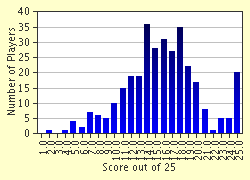Quiz Answer Key and Fun Facts
1. An animal's defenses against disease are affected by:
2. The immune system has two separate but coordinated "branches". What are they?
3. Which of the following would be a vaccine-, animal-, or management - related reason for failure of protection against disease in a vaccinated animal?
4. When treating a bacterial infection with antibiotics, you should stop treatment as soon as clinical signs are gone, even if only after one dose.
5. Most animals can absorb antibodies from colostrum ________.
6. The flea is the ___________ of tapeworms.
7. Most neonates do not start making their own antibodies until maternal antibodies have decreased.
8. __________ is great tissue associated with healing, has lots of blood supply and is resistant to infection.
9. Inflammation is characterized by ___________.
10. The proliferation phase of wound healing begins immediately and lasts for about 2-5 days.
11. If the vet gave you a powdered medication to administer to your dog, what is the easiest way for you give it?
12. An abscess in the jowl region of a horse and profuse nasal discharge are symptoms of which contagious disease?
13. What contagious skin condition leaves small circular patches of bare skin?
14. What parasite most often causes colic in horses because it blocks the blood supply to the intestines?
15. What test is required by US law to check for Equine Infectious Anemia?
16. Which of the following respiration rates would fall in the normal range for a resting horse? (bpm= breaths per minute)
17. You dip a lamb's navel with a betadine wash to prevent a cold.
18. Another name for tetanus is?
19. Another name for strangles in horses is __________?
20. Which of the following is NOT an external parasite?
21. Strongyles are also called bloodworms.
22. What insect is responsible for carrying Eastern Equine Encephalitis?
23. What is the most likely problem or contamination in flowing surface water?
24. Overfeeding bran mashes to horses can result in nutritional secondary hyperparathyroidism, 'bran disease', or 'big head disease' because bran is:
25. What is the correct way to irrigate (wash) a wound to prevent further tissue damage and contamination of deeper tissues?
Source: Author
shadowappys
This quiz was reviewed by FunTrivia editor
crisw before going online.
Any errors found in FunTrivia content are routinely corrected through our feedback system.


